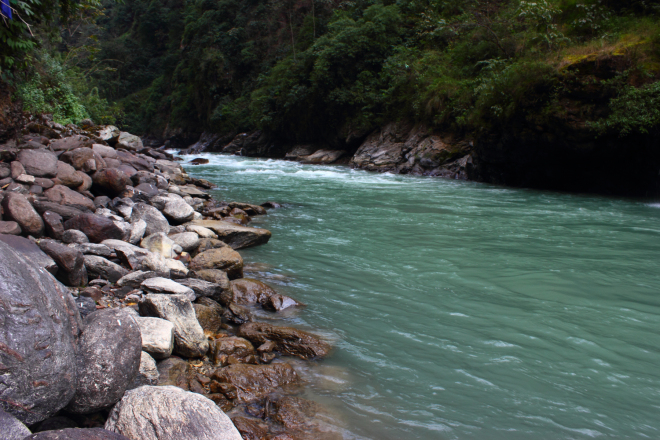
As World Water Week draws to a close, we want to tell you about a water management project we’re involved with in the developing world.
The Koshi River basin covers some of the poorest parts of China, India and Nepal. The river stretches more than 700km, from China in the north, down through Nepal and across the Himalayas, and finally feeds into the Ganges River. Millions of people live in the region – many of them in flood-prone areas – and rely on the river and the fertile floodplain for their livelihoods.
We’re helping to manage the river better and improve the circumstances of the people living there.
The area is subject to floods, droughts landslides and flows of debris. Erosion also leads to heavy sedimentation, and rivers have been known to change their course.

The effects of climate change aren’t helping, either. Glaciers in the upper reaches of the Basin are melting, bringing water and sediments down to the plains. The people of the Koshi River Basin are in an increasingly vulnerable situation. The impacts of climate change are disturbing water supply and agricultural production. Adding more pressure, the demand for energy and food production is rising.
Raising the stakes even higher, the Koshi Basin also has areas of significant biodiversity, including a UNESCO World Heritage Site.
With funding from the Department of Foreign Affairs and Trade – Australian Aid, we’re working with partners including the International Centre for Integrated Mountain Development, the International Water Management Institute and eWater to develop an integrated modelling framework for the entire basin. We’re helping to develop water balance models that capture the relationship between climate (both rainfall and temperature) and stream-flow (and flood risk) in the Koshi River Basin.
We’re also working on characterising the seasonality and variability of stream flow, and, if possible, the expected trends in stream-flow. We’ll also develop techniques for understanding the likelihood of particular stream-flow estimates.
We aim to use the research and knowledge gained from these projects to allow a regionally coordinated approach to developing and managing the Koshi Basin’s water resources. The people of the area, and the environment, should both benefit.

